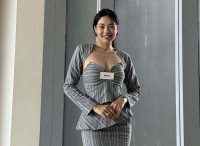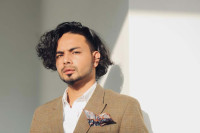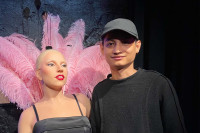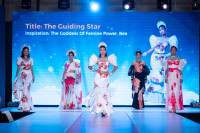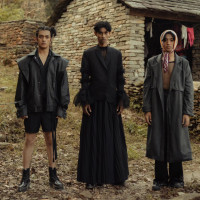Fashion
The designer who almost became a doctor
Shambhu Puri, a Nepali designer and founder of Sam Sui Clothing, reflects on his rise from unpaid gigs to styling major shows and celebrities.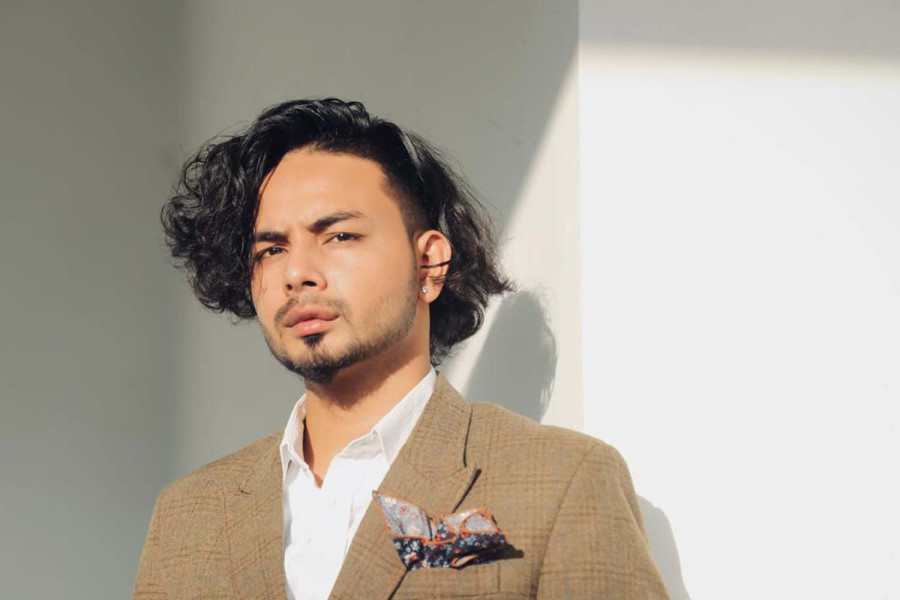
Sanskriti Pokharel
Shambhu Puri is a fashion designer, stylist, and the founder of Sam Sui Clothing. He has styled major reality shows such as Himalaya Roadies Seasons 5 and 6, and The Poet Idol Season 1, and served as the fashion stylist for ECS Living Magazine. His work has extended to over 30 music videos, including ‘Tadha Vaye Pani 2’, ‘Kauli’, and ‘Yo k Bhayo’.
He has also been a personal stylist to well-known Nepali figures like actress Priyanka Karki, actor Anoop Bikram Shahi, actor Ayushman DS Joshi, and Miss Nepal World 2022, Priyanka Rani Joshi.
In this conversation with the Post’s Sanskriti Pokharel, Puri reflects on his journey from unpaid work to styling major shows and celebrities.
You envisioned yourself becoming a doctor. What made you pursue fashion instead?
Yes, I dreamed of becoming a doctor. I have a soft heart, and being there for someone in pain gives me a sense of purpose. However, financial hardships prevented me from continuing on that path. It was one of the hardest decisions of my life.
But sometimes, when one door closes, a more meaningful one opens.
Ever since childhood, I have found comfort and freedom in art. I was drawn to colours, textures, and expressions. Fashion, to me, was fun, emotional, and endlessly creative. It was storytelling in silence.
Over time, I realised that fashion could also heal—yes, not the body but the soul. It could inspire, empower, and restore confidence in someone who felt unseen.
That realisation changed everything. I understood that fashion wasn’t just an alternative; it was a new way of helping people, a new way of making them feel strong, beautiful, and understood. And that purpose has been fueling my journey ever since.
Sam Sui Clothing mixes tradition with modern style. What inspired you to create this blend?
Sam Sui Clothing emerged from a desire to represent our Generation Z, who cherish their roots yet view the world with a global perspective.
I wanted to create something that honoured the richness of Nepali culture while embracing bold, modern aesthetics. That blend came naturally because it reflects who I am: rooted in heritage, yet always reaching forward.
My journey focuses on commercial styling, costume design, and collaboration, providing experience, enhancing my creativity, and building strong industry relationships.
But now, with the upcoming Sam Sui Clothing relaunch, I’m focusing on my brand. This time, I’m pouring my thoughts, inspirations, vision, and years of experience into a collection that reflects who I am as a designer. It’s not just about fashion, it’s about identity, storytelling, and leaving a mark that feels personal and purposeful.
You styled for Himalaya Roadies and The Poet Idol. What’s your creative process like when designing for reality TV shows?
Reality shows are high-energy, fast-paced, and visually demanding. Every moment is a performance, and every look has to speak loud and clear.
My creative process begins with understanding the soul of the show: the theme, the emotions, the audience, and most importantly, the people involved.
For Himalaya Roadies, it was channelling intensity, power, and attitude. Each gang leader had a distinct persona, from fierce and fearless to calculated and charismatic. I designed their looks to amplify those traits. The outfits had to match the grit, competition, and raw emotion of the show.
The Poet Idol’s energy was more reflective and emotional. It was about art, vulnerability, and expression. So, I leaned into softer textures, layered details, and elegant silhouettes that echoed the depth and sensitivity of poetry.
Many of your projects didn’t pay well. What were those days like, and how did you keep going?
There were days I worked 24-hour shoots with no pay, came home exhausted, running on nothing but adrenaline and hope. And still, I felt grateful because I knew I was learning, growing, and building something far bigger than money. I won’t glamorise those days; they were tough. There were moments of doubt, moments I questioned everything.
But deep down, I believed that every set I walked into, every costume I designed, every styling session, even those that didn’t pay, was a brick in the foundation I was laying. I reminded myself: this is bigger than now. It’s about where I’m headed.
Passion kept me moving forward, but faith gave me strength. I believe that if I stay consistent and keep showing up with heart and hustle, things will all come together one day. And slowly, it did. Those unpaid days were the hidden investment in the dream I’m living now.
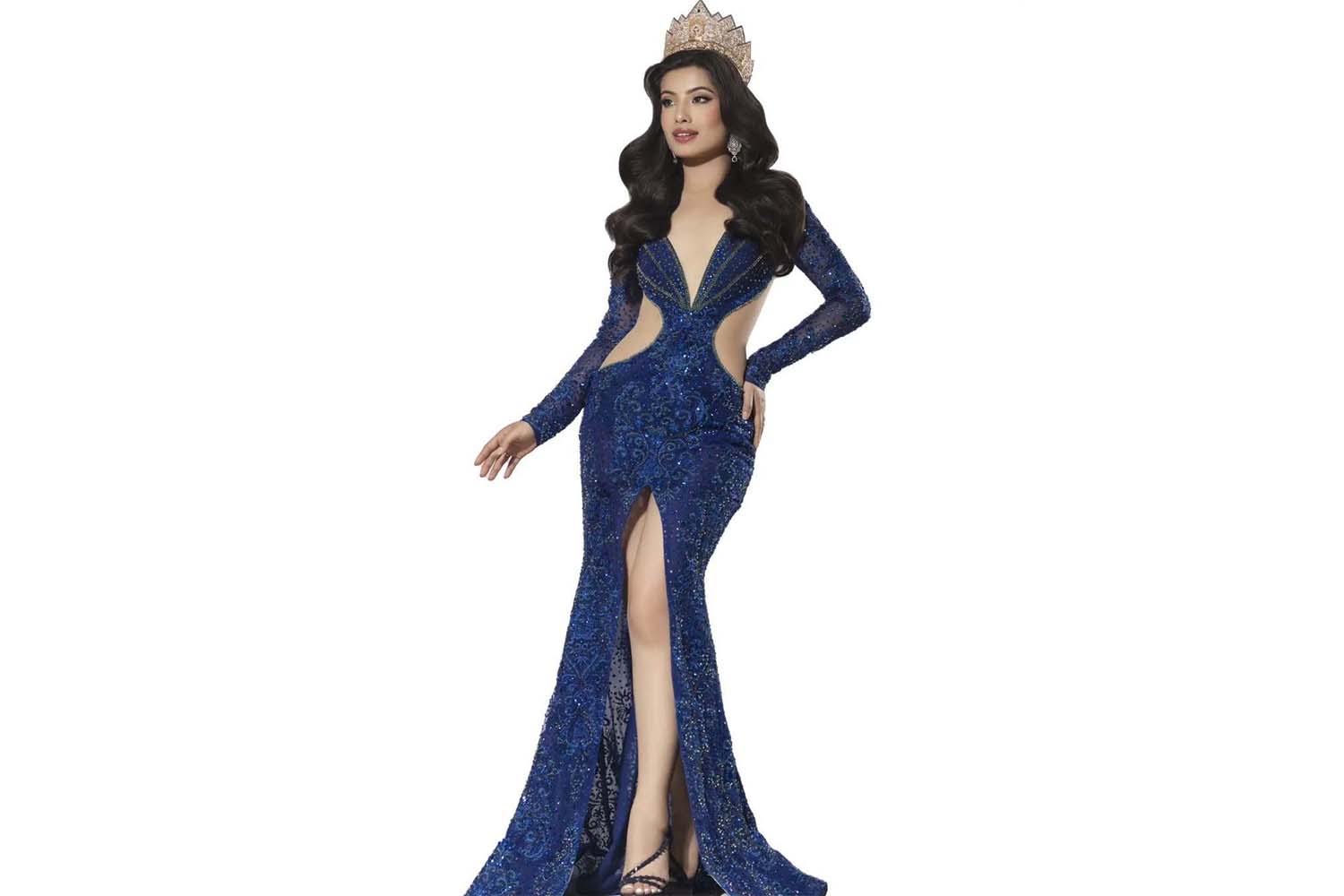
Do you think Nepal’s fashion ecosystem is evolving in terms of professionalism and fair compensation?
Yes, it’s evolving. There’s more visibility now, more conversations around fashion as a serious profession, and an emerging wave of talent breaking boundaries. But we still have a long way to go when it comes to professionalism and fair compensation. Many young designers, stylists, and creatives are still undervalued, expected to work without contracts, structure, or proper pay.
We need to start creating systems that respect and protect creative labour. There needs to be fair contracts, ethical collaborations, and a culture that values not just the final product, but the heart, time, and vision behind it.
What may look like just one outfit or a one-day shoot to someone could be someone’s dream, hope, and future. We need to honour that. Behind every look is creative labour, and that deserves to be respected. The talent is already here. Now, it’s time for the structure to rise with it.
You’re pursuing a Master’s in Fashion Marketing in New York. What’s the biggest difference you’ve noticed in how fashion works there versus Nepal?
The biggest difference I’ve felt is the freedom. The space to express, create, and evolve. In New York, fashion is seen and understood as identity, intention, and voice. Here, people wear who they are. Fashion celebrates individuality, emotion, and confidence in an empowering way. That energy shifts something in you. It pushes you to think deeper, dream bigger, and show up more fully.
I’m learning how everything from branding to storytelling, to even the materials we choose, holds purpose. Fashion here is intentional. It’s often tied to a cause, to sustainability, to meaning. That has changed how I see my role as a creative, not just to design, but to connect, reflect, and even challenge through what I create.
Nepal has talent and craftsmanship, but it often lacks the same structure or global perspective. Being in The Big Apple is helping me grow as a designer and a creative thinker. It’s a journey of learning, unlearning, and becoming, and I’m grateful for every step.
What advice would you give to young creatives who are just starting but don’t have big platforms or connections?
Start where you are, use what you have, and stay consistent. Don’t wait for the perfect opportunity or the big platform. Create your own. Post your work, collaborate with like-minded people, volunteer, assist, and keep learning. Your work will speak for you if your passion is real.
Also, don’t be afraid to be you. The world doesn’t need more copies. Instead, it needs your originality, your story. Stay humble, stay hungry, and never underestimate where your dreams can take you.




 7.12°C Kathmandu
7.12°C Kathmandu
